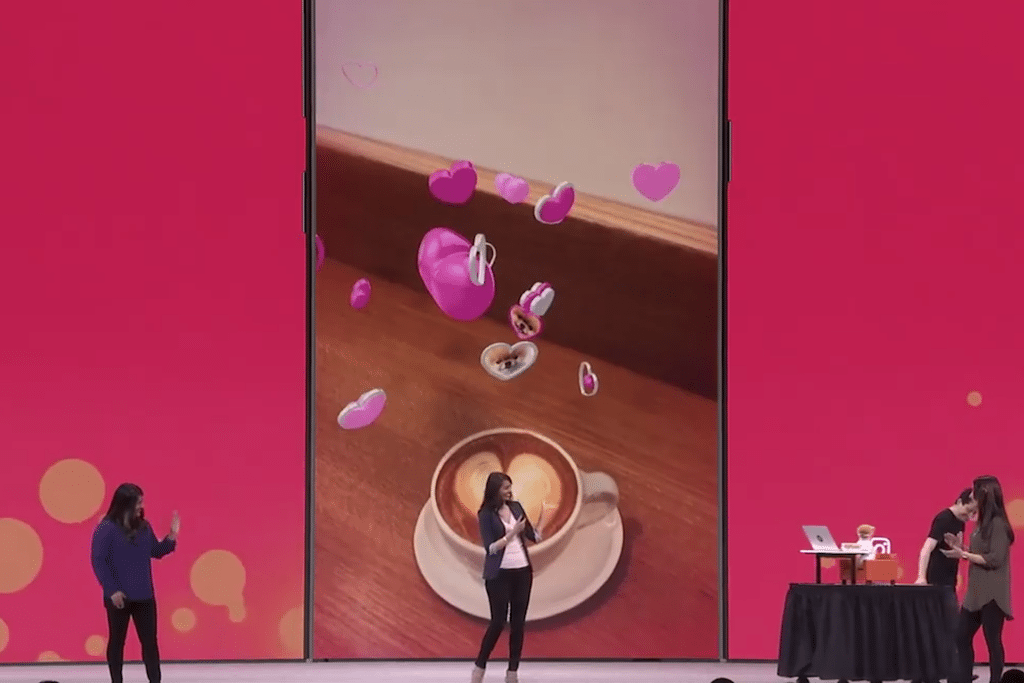Augmented Reality Is Silly Right Now But Won't Be Forever

Skift Take
Consumers aren't embracing augmented reality yet, but Silicon Valley companies and the events industry alike remain committed to developing useful applications using the technology.
The phenomenal success of Pokemon Go a few years ago, somehow, didn't bring augmented reality into the mainstream. In fact, it may have held back the technology by portraying it as a gimmick instead of a useful tool.
In the meetings and events space, in particular, the promise of creating transformative tools and experiences for attendees remains a powerful opportunity.
A recent spate of announcements by technology providers shows the path forward for augmented reality as a companion to real-life experiences.
Facebook announced enhanced augmented reality filters for its Messenger app a few weeks ago, while Instagram and Snap have both doubled down on providing a variety of augmented reality options for users as well. Snap has led the way with augmented reality in recent years, albeit with the ability to simply animate whatever your mobile phone camera sees.
While having a little cartoon version of yourself dangling off a ledge or placing a computerized cat on the head of your coworker are admittedly stupid applications of this technology, increased visibility in consumer social networking apps helps to mainstream augmented reality at a time when virtual reality has garnered most of the headlines surrounding the future of digital interactivity.
A look at research doesn't bode well for augmented reality's popularity. More than half of those who haven't tried an augmented reality application simply aren't interested in doing so, according to a survey by research firm Artillry.
"... The variance in satisfaction for users and non-users underscores AR’s marketing challenge," reads the report. "People love it after they get a taste… but you have to get them to taste it before achieving that satisfaction. And with augmented reality, it’s difficult to do this through ad copy or video.
"This will slowly alleviate over time as mobile augmented reality assimilates into the consumer population through viral and other means. Meanwhile, augmented reality adoption can be accelerated through stickiness and social features that carry the experience to more users via network effect."
Practical Matters
More practical apps, though, are gaining some traction. Ikea's augmented reality app that lets users put furniture in real spaces is the second most popular app using Apple's ARKit technology, for instance.
The technology is already used by businesses across the world, particularly in the manufacturing sector, to assist workers in their day-to-day tasks. The failure of Google Glass years ago proves that consumers don't really want to use this technology through their glasses, but more use cases are emerging mediated by the mobile phone screen.
"Augmented reality is slowly making its way to the mainstream, and what we’re seeing in the events space is closely mirroring what we’re seeing in the consumer world," said Benjamin McChesney, vice president of experiential technology at Helios Interactive Technology, a Freeman Company. "Augmented reality filters on platforms like Snap, Facebook, and others are used as novelty items to increase consumer involvement with an app.
"Augmented reality from the events perspective has initially been used as a tool to catch someone’s attention and get them engaged with a brand. We believe that augmented reality is now transitioning to a more pragmatic tool – attracting participants through a visually interesting experience, but then providing them information in a more personalized and relevant way."
Look no further than the keynote last week at Google's I/O conference; augmented reality directions are coming to Google Maps, along with more powerful software development tools for companies looking to enter the space.
There's also the promise of shared development across iOS and Android devices, reducing the complexity of developing apps across different platforms. Fragmentation in the space, led by competing messaging apps, shows that there won't be a single app or platform that dominates.
Instead, adoption will be driven by compelling use-cases regardless whether the technology is housed in a messaging platform or a standalone app. Personalized guidance around a festival, or real-time information during a keynote, are applications that will provide real value to attendees; whether they provide a tangible return on investment to event planners is unclear for now. Musical events are also experimenting with the ways in which augmented reality can add to the artistic experience.
The time for innovation is here, even if mobile users are currently unconvinced by the augmented reality experiences they've had so far.




